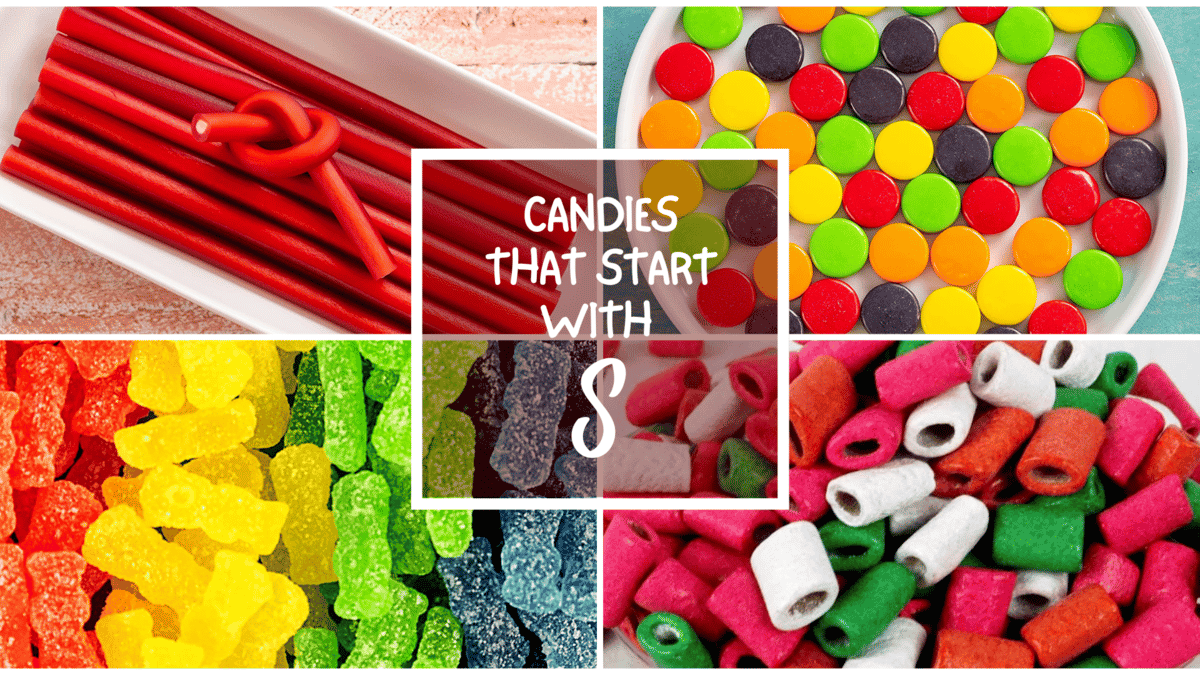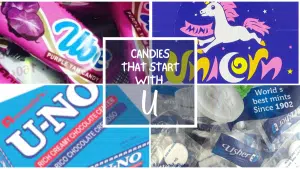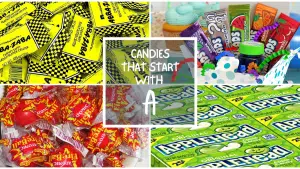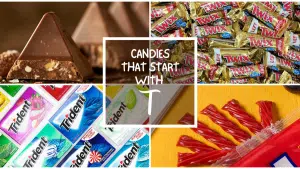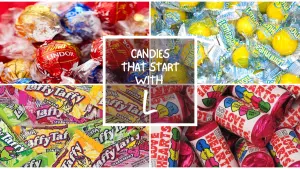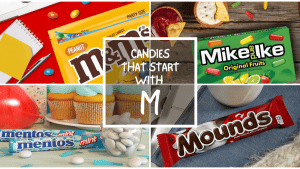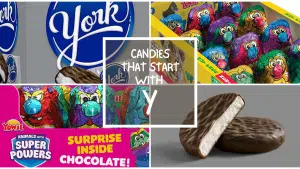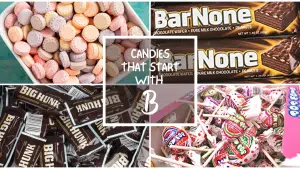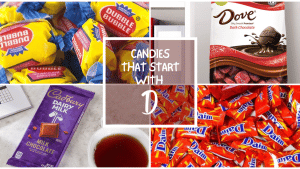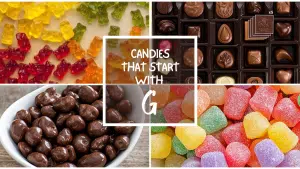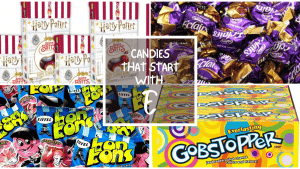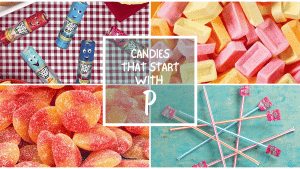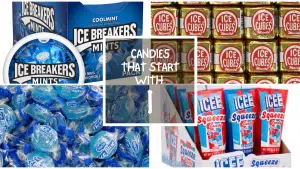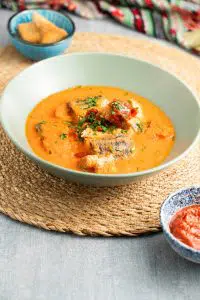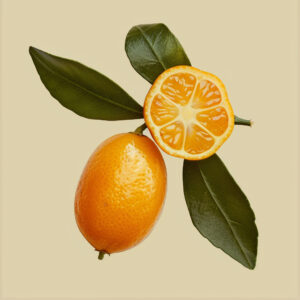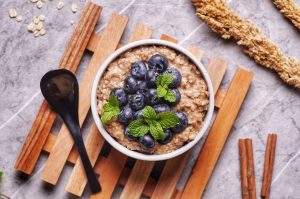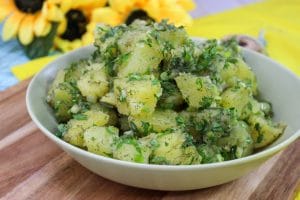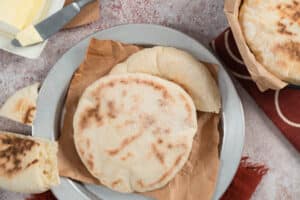All The Candies That Start With S
Important Note: When you buy through our links, we may earn a commission. As an Amazon Associate we earn from qualifying purchases. Content, pricing, offers and availability are subject to change at any time - more info.
The big names in fruity and rainbow candies shine like beacons on the S list of candies. However, a smattering of decadent chocolate confections and a sprinkle of sour treats make a name for themselves too. From the juiciest to the chewiest and the sweetest to the sourest, the S candies mean business. Have a look.
- Skittles
- Skor
- Smarties
- Snaps
- Snickers
- Sno-Caps
- Sour Patch Kids
- Spree
- Starburs
- Sugar Babies
- Swedish Fish
- Sweet Tart Ropes
- The Final Letter
Skittles
First introduced in the mid-70s in the UK, Skittles are tiny, pill-shaped candies with a hard exterior shell and chewy inside. Manufactured by Mars Wrigley, Skittles hit US markets in 1979. Skittles are known for the colorful variety of candies in each package. In fact, the Skittles slogan, “Taste the rainbow,” says it all. Skittles are rainbow-colored candies in delicious fruit flavors. In addition to the original fruit flavor, Skittles also come in Tropical, Wild Berry, Desert, Sweet Heat, Sour, and Smoothie flavors. Nevertheless, an original pack of Skittles contains strawberry, green apple, grape, lemon, and orange flavors.
Of note, Skittles are packaged in paper pouches but can also be found in big sharing bags, jars, and “mash-up” combination packs. The main ingredients in Skittles are sugar, corn syrup, citric acid, and both natural and artificial flavors. Finally, a serving of Skittles contains 250 calories, two-and-a-half grams of fat, and 45 grams of sugar.
Skor
Skor is a chocolate bar that first hit American candy aisles in 1981. Manufactured by The Hershey Company, Skor is a simple candy bar with a big following. Popular in both US and Canadian markets, Skor is similar to Heath or Daim Bars. Skor is a thin, crispy bar of sweet butter toffee covered in a thin thin layer of rich milk chocolate. Interestingly, although the Skor bar was designed to compete with Heath, they are now manufactured by the same company.
Of note, Skor is a Swedish word for brittle thus this bar’s name. Skor is a one-trick pony and only comes in its standard variety. The primary ingredients in a Skor bar include soy lecithin, salt, vanillin, and artificial flavors. A serving of Skor contains 210 calories, seven grams of fat, 24 grams of sugar, and one gram of protein. Lastly, Skor bars are gluten-free but do contain almonds, soy, and milk.
Smarties
Invented in 1949 in Elizabeth, New Jersey, Smarties are a brand of sweet and tart wafer candies. Today, Smarties are made in factories in both New Jersey and Ontario, Canada. Manufactured by Smarties Candy Company, Smarties are small tablets or wafers that come in cellophane rolls of 15. Smarties have a chalky texture and come in a variety of pastel colors, though the flavors of each are the same. Smarties are a popular Halloween, goody bag, and classroom treat.
Smarties can be purchased in three-pound bulk bags, boxes, and jars. Besides the original variety, they also come in Tropical and Sour varieties too. Notably, Smarties are gluten-free, vegan, and free from the nine predominant food allergens. Smarties are made with dextrose, citric acid, calcium stearate, and artificial flavors. One roll of Smarties contains 25 calories and six grams of sugar.
Snaps
First introduced by the Chicago-based American Licorice Company in the 1930s, Snaps are bite-sized licorice candies. Made by the same company as Red Vines and Sour Punch Straws, Snaps come from a family of chewy delicious candies. Though they were discontinued in 2001, uproarious Snaps fans demanded their return…and it worked; Snaps returned to candy aisles in early 2022.
Snaps are bite-sized, pastel-colored licorice bites; the pastel outer tube comes in colors like pink, orange, and white and each tube is filled with delicious black licorice. Of note, Snaps are primarily made of corn syrup, wheat flour, molasses, corn starch, and licorice extract. Ultimately, a serving of Snaps has 140 calories, 19 grams of sugar, one gram of dietary fiber, and two grams of protein.
Snickers
Manufactured in Chicago in the 1930s, the Snickers candy bar is a nutty favorite that was purportedly named after a racehorse. This sensational chocolate bar is sold globally, however, in the UK it’s called the Marathon bar despite having the same recipe and packaging. Snickers bars are filled with caramel, peanuts, and nougat and then covered in a thick layer of milk chocolate. Snickers come in a standard size as well as king-size, fun-size, and miniature varieties.
In addition to the original flavor profile, Snickers has a few spinoffs too. In 1989, the Snickers ice cream bar was introduced and in 2021 brownie-filled varieties hit the candy market. Other popular Snickers varieties include Almond, Peanut Butter, and Peanut Brownie. The main ingredients in the standard bar include milk chocolate, corn syrup, peanuts, sugar, and palm oil. Lastly, a standard Snickers bar contains 250 calories, 12 grams of fat, 28 grams of sugar, four grams of protein, and one gram of dietary fiber.
Sno-Caps
Invented in the late 20s by the Blumenthal Chocolate Company, Sno-Caps are sweet, crunchy, and delightful. A much-loved movie theater threat, Sno-Caps are now manufactured by Nestle which is owned by The Ferrara Candy Company. Sno-Caps are tiny nonpareils made of semi-sweet chocolate and topped with crunchy white sprinkles. Sno-Caps are drop-shaped making them look like tiny, snow-capped mountains. The main ingredients in Sno-Caps are semi-sweet chocolate, sugar, corn starch, carnauba wax, and confectioner’s glaze. Finally, a serving of Sno-Caps has 180 calories, eight grams of fat, 24 grams of sugar, and one gram of protein.
Sour Patch Kids
Introduced in the US in 1985, Sour Patch Kids are a cult classic. Manufactured by Mondelez International, Sour Patch Kids are an uber sour candy in the shape of small children. Each sour candy is coated in granulated sugar; the sweetness of the sugar perfectly offsets the overtly sour flavor of the gummies. Sour Patch Kids were originally marketed to movie theaters in big shareable boxes; they’re still a popular theater treat today. Sour Patch Kids also come in fun-size packages, shareable bags, and bulk tubs.
Though the original Sour Patch Kids come in a medley of fruit flavors including orange, lemon, and lime, they’ve also come out in a vast array of other colors and flavors. Some popular spinoff varieties of Sour Patch Kids include Watermelon, Bunnies, Extreme Sour, and Tropical to name a few. The main ingredients in Sour Patch Kids are sugar, corn syrup, modified corn starch, and citric acid. A 16-piece serving of Sour Patch Kids contains 150 calories and 26 grams of sugar.
Spree
Invented by the Sunline Candy Company in the mid-1960s, Spree is a brand of fruity chews. Marketed as “a party in your mouth,” Spree is now manufactured by The Ferrara Candy Company following a stint with Nestle. Sprees are bright, rainbow-colored chewy candies; each is disc-shaped and bite-sized. Historically, Sprees were packaged in rolls of about 10 or so candies, but today they also come in shareable boxes.
Sprees are vibrant discs that pack a punch of juicy fruit flavor. Significantly, the original Sprees come in grape, orange, lemon, lime, and cherry flavors; each package contains a mix of all five flavors. Spinoff flavors have been released over the years, one of which includes a Mixed Berry edition. Sprees are made with dextrose, maltodextrin, malic acid, and corn syrup among other ingredients. Lastly, a serving of Spree has 50 calories and 13 grams of sugar; if allergens are a concern, beware that Sprees may contain eggs.
Starburs
Starbursts were invented in the 1960s in the UK where they were called Opal Fruits; in 1967 they made their way to the US where the name was officially changed to Starbursts. Today, Starbursts are manufactured by Mars Wrigley. When Starbursts first hit the US candy market they were available in a sleeve of four flavors: strawberry, lemon, orange, and lime. Starbursts are juicy, fruit-flavored, taffy-like squares that are individually wrapped in folded wax wrappers.
Today, Starbursts are available in a bevy of packaging options and flavors. Besides the original Starburst Chews, these colorful candies now come in Minis, Swirlers (similar to Pixy Stix), Airs, and Gummies. In addition to the original fruit flavors, some spinoff flavors include Duos (which are blended flavors) or all-one-color packs like Pinks or Reds. Notably, Starbursts are made with corn syrup, sugar, palm oil, fruit juice, and citric acid while a serving contains 160 calories, three grams of fat, and 22 grams of sugar.
Sugar Babies
Invented in 1935 by the James O. Welch Company, Sugar Babies were originally a Jamaican brand of bite-sized caramel candies. Today, Sugar Babies are manufactured by Tootsie Roll Industries. Sugar Babies, which were named for an old-timey song entitled “Let Me Be Your Sugar Baby,” are uneven round bites of caramel candy. They’re chewy, creamy, and sweet and most certainly require good flossing after eating a few.
Sugar Babies come packaged in shareable cardboard boxes and are a popular movie theater treat. Interestingly, Sugar Babies are a member of the Sugar family of candies; they derive from the Sugar Daddy lollipop and the Sugar Mama chew. Sugar Babies are candy-coated, giving them a harder exterior than the soft milk caramel interior. It’s worth noting that the main ingredients in Sugar Babies are sugar, corn syrup, palm oil, and confectioner’s glaze. A 21-piece serving of Sugar Babies has 120 calories, one gram of fat, and 22 grams of sugar. If allergens are a concern, know that Sugar Babies are processed in a facility alongside eggs, milk, and soy.
Swedish Fish
Named for Sweden’s burgeoning fishing industry, Swedish Fish were invented in the 1950s by Malaco, a Swedish candy maker. Swedish Fish are gummy, all-red candies that are shaped like, you guessed it, fish! Though they’ve changed hands a few times over the years, Swedish Fish are now manufactured in North America by Mondelez. Of note, Swedish Fish are perfectly crafted to be not too sweet and not too chewy or hard; they’re just right. Swedish Fish were originally packaged in a single serving, plastic bag, but today they come in a variety of packaging options.
Though the all-red variety is the original and most popular variety of Swedish Fish, they’re also now available in an assorted more colorful variety as well as Tropical, Tails, Mini, and Friends varieties. The primary ingredients in Swedish Fish include sugar, corn syrup, corn starch, citric acid, and artificial flavors. Lastly, a single serving of Swedish Fish contains 100 calories and 23 grams of sugar.
Sweet Tart Ropes
Sweet Tart Ropes are a pop-culture smash in terms of candy. A derivative of the original Sweet Tarts candies, Sweet Tart Ropes first hit the candy scene in 2015. Sweet Tart Ropes are manufactured by Nestle, Incorporated in Glendale, California. Sweet Tart Ropes are a long, chewy candy that comes in ropes similar to licorice or Twizzlers. Each Sweet Tart Rope is soft and chewy with a white fruit punch filling; in their entirety, they are super sweet and colorful.
Besides the standard ropes format, Sweet Tart Ropes come in Rope Bites and besides the original fruit punch flavor, they’re also available in Watermelon Berry Collision, Twisted Mixed Berry, and Sour Apple among others. Notably, Sweet Tart Ropes are primarily made with sugar, corn syrup, wheat flour, and gelatin. A serving of two ropes contains 90 calories and 14 grams of sugar.
The Final Letter
Whether you’re here for the chewy textures of Starburst or Sugar Babies or the sour flavors of Sour Patch Kids or Sprees, the S candies are a true delight. With selections running the gamut of candy types and tastes, there’s a confectionery treat for every palette on the list of candies that start with S.
